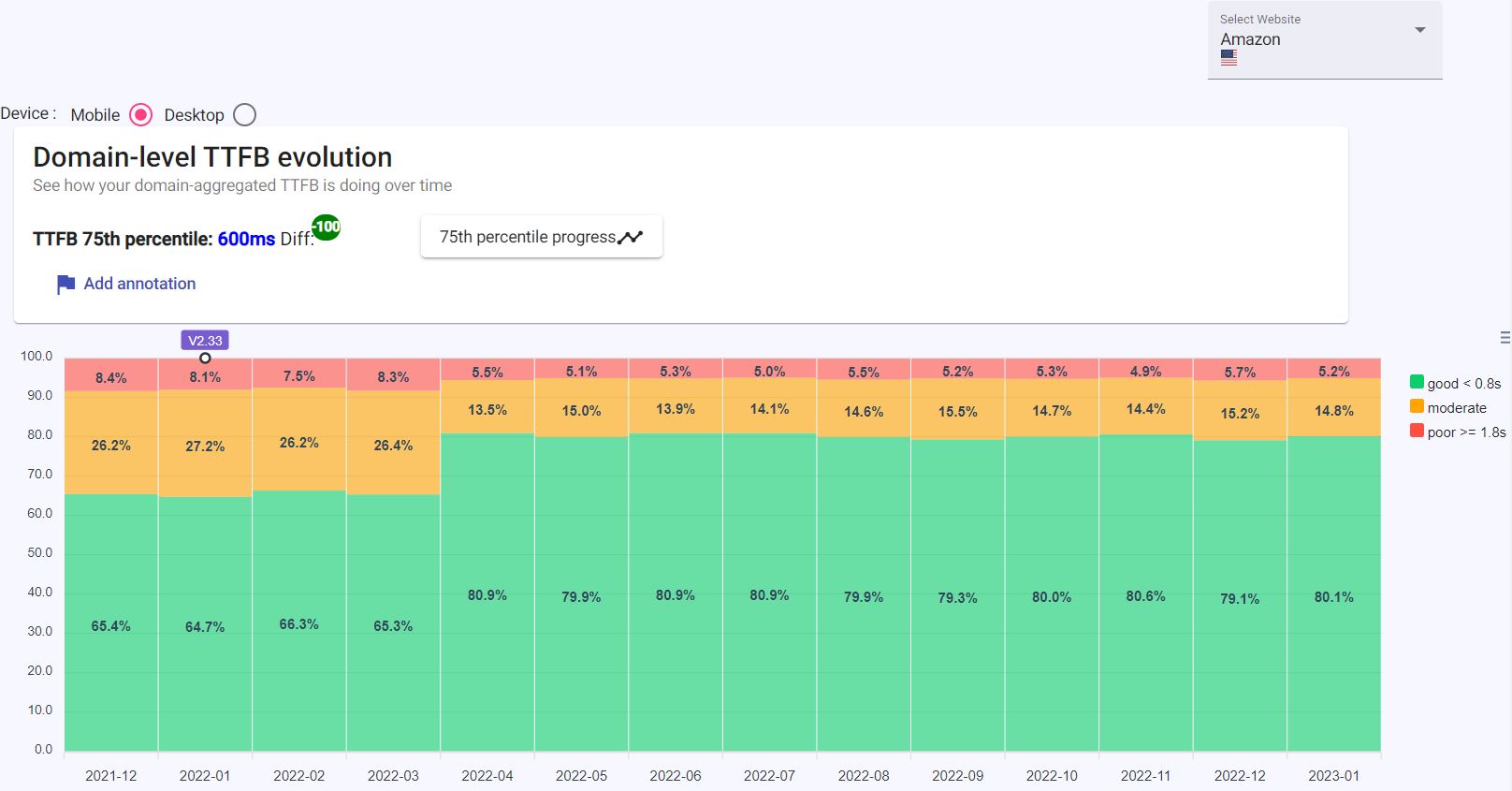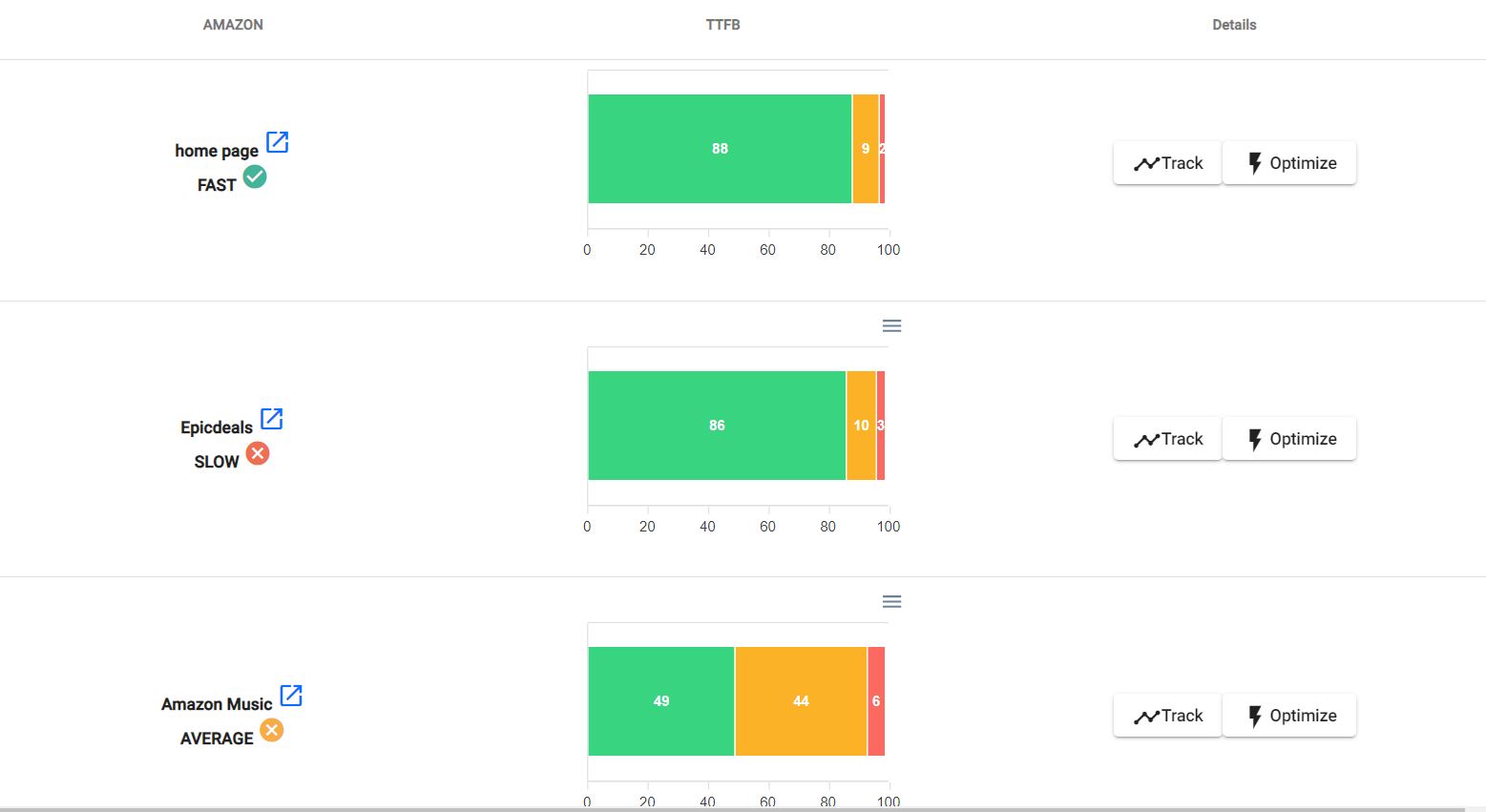TTFB - misunderstanding about its measurement
138 views
Skip to first unread message
Bohdan Kladkovyi
Feb 21, 2023, 9:33:26 AM2/21/23
to web-vitals-feedback
Hello guys!
Could you help me please with one confusing piece of information that I got some time ago about TTFB measurement flow?
in this article, you can find info TTFB applies to all requests, not just navigation requests.
Could you help me please with one confusing piece of information that I got some time ago about TTFB measurement flow?
in this article, you can find info TTFB applies to all requests, not just navigation requests.
And now I am shocked because at the beginning of the article, you can find the next sentences:
Because TTFB precedes user-centric metrics such as First Contentful Paint (FCP) and Largest Contentful Paint (LCP), it's recommended that your server responds to navigation requests quickly enough so that the 75th percentile of users experience an FCP within the "good" threshold. As a rough guide, most sites should strive to have Time To First Byte of 0.8 seconds or less.
Because TTFB precedes user-centric metrics such as First Contentful Paint (FCP) and Largest Contentful Paint (LCP), it's recommended that your server responds to navigation requests quickly enough so that the 75th percentile of users experience an FCP within the "good" threshold. As a rough guide, most sites should strive to have Time To First Byte of 0.8 seconds or less.
So, how I can understand that?
TTFB is really measured throughout the page lifecycle? Or I got it the wrong way.
Thanks in advance!
Thanks in advance!
Aymen Loukil
Feb 21, 2023, 9:48:38 AM2/21/23
to web-vitals-feedback
Hello Bohdan,


In the screenshot above we see Vinted.com P75th percentile increasing for mobile users.

TTFB (like other metrics) should be monitored both on domain-level and on page-level. TTFB is for the first HTML request.
what matters the most is to monitor TTFB in the field (real users data). Here is how I do it, hope it will be useful:
1- I monitor the domain-name TTFB over time (monthly progress) for each device
In the above screenshot, Amazon.com domain TTFB progress on mobile.
2- I monitor the 75th percentile of my domain TTFB and how it is evolving
In the screenshot above we see Vinted.com P75th percentile increasing for mobile users.
3- Sort my top internal pages by TTFB so be able to prioritize the less performing ones
We see that the Amazon Music page has the worst TTFB distribution compared to other ones.
Screenshots are from Speetals. A tool I'm building to monitor users web performance : https://app.speetals.com/demo/project
Aymen,
Bohdan Kladkovyi
Feb 21, 2023, 9:52:41 AM2/21/23
to web-vitals-feedback
Aymen Hello!
Thanks a lot for your quick response :)
Now I am not confused about TTFB measurement)
Have a nice day!
Bohdan!
Thanks a lot for your quick response :)
Now I am not confused about TTFB measurement)
Have a nice day!
Bohdan!
Barry Pollard
Feb 22, 2023, 7:56:30 AM2/22/23
to web-vitals-feedback
TTFB is quite an overloaded term and it can be confusing.
TTFB can also be measured on each resource - how long from the request of that resource until you get the first byte of that resource back. This can be useful to measure any latency in individual resources. For example if your LCP element is an image and you see it's slow despite the page having a fast TTFB and the LCP element being discoverable in that, then maybe it's due to a slow TTFB of that resource (which could be due to being on another domain, like an image CDN and thus requiring a new TCP/TLS connection).
But in general, when discussing TTFB in terms of web performance, it refers to the first bytes of the HTML document.
Nilanjan Siromani
Mar 8, 2023, 8:23:45 AM3/8/23
to web-vitals-feedback
Speaking from experience :
On our pursuit to reduce TTFB, we ended up doing a lot of things, until
we realised that our incoming traffic is going through 4 levels of ad server redirections.
The interesting thing is the calculation starts from the point users click on your link(in some page)
now if that link takes you via click tracking servers which sends 302, the latency of all those responses are all added up to TTFB
and also to FCP and LCP
Reducing 2 such click tracking servers helped up gain about 800ms on TTFB , LCP and FCP
On our pursuit to reduce TTFB, we ended up doing a lot of things, until
we realised that our incoming traffic is going through 4 levels of ad server redirections.
The interesting thing is the calculation starts from the point users click on your link(in some page)
now if that link takes you via click tracking servers which sends 302, the latency of all those responses are all added up to TTFB
and also to FCP and LCP
Reducing 2 such click tracking servers helped up gain about 800ms on TTFB , LCP and FCP
Tony “Tiggerito” McCreath
Mar 8, 2023, 8:39:53 AM3/8/23
to web-vitals-feedback
103 early hints (supported by at least Cloudflare) have also muddied the water of TTFB. If their cache hits, they will return a very quick 103 that triggers the TTFB, but no HTML is returned at that time. I don't believe there is a way to track the true HTML response time when 103s are involved.
Because of this, and a few other solutions that cause good TTFBs without improving total HTML load time, I no longer focus on TTFB.
It would be nice to have an HTML load completion time (does it have a name?), but I don't know how to get that, so I focus on FCP when analysing if server response times are an issue.
Because of this, and a few other solutions that cause good TTFBs without improving total HTML load time, I no longer focus on TTFB.
It would be nice to have an HTML load completion time (does it have a name?), but I don't know how to get that, so I focus on FCP when analysing if server response times are an issue.
Reply all
Reply to author
Forward
0 new messages
